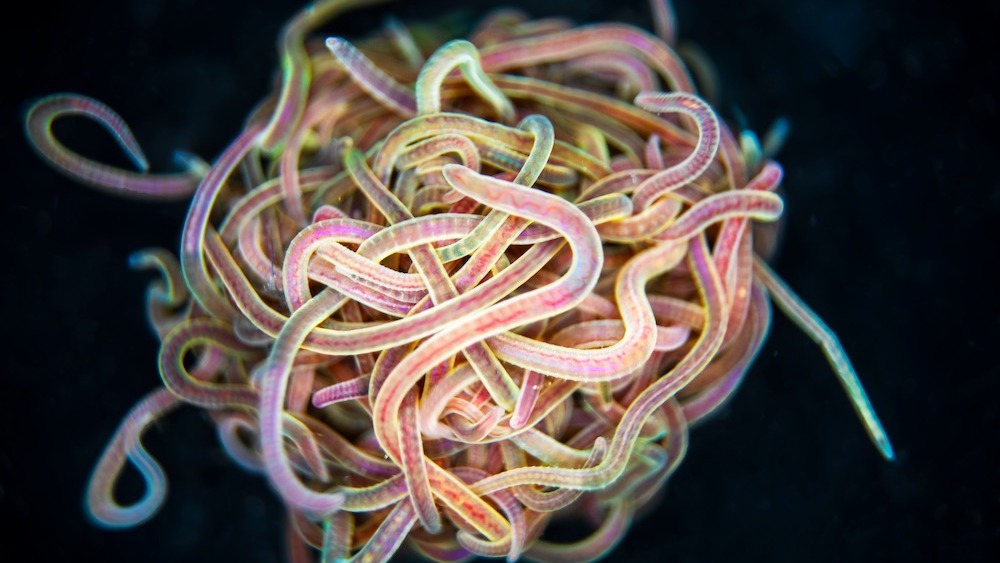Watch thousands of worms 'explosively' untangle themselves from a knotted ball in milliseconds
Researchers created a mathematical model showing how worms can untangle themselves from each other.

Worms can entangle themselves into a single, giant knot, only to quickly unravel themselves from the tightly wound mess within milliseconds. Now, math shows how they do it.
Researchers studied California blackworms (Lumbriculus variegatus) — thin worms that can grow to be 4 inches (10 centimeters) in length — in the lab, watching as the worms intertwined by the thousands. Even though it took the worms minutes to form into a ball-shaped blob akin to a snarled tangle of Christmas lights, they could untangle from the jumble in the blink of an eye when threatened, according to a study published April 28 in the journal Science.
"We wanted to understand the exact mechanics behind how the worms change their movement dynamics to achieve tangling and ultrafast untangling," study co-author Saad Bhamla, an assistant professor in the School of Chemical and Biomolecular Engineering at the Georgia Institute of Technology, said in a statement. "Also, these are not just typical filaments like string, ethernet cables, or spaghetti — these are living, active tangles that are out of equilibrium, which adds a fascinating layer to the question."
Related: Worms and humans both get 'the munchies' despite 500 million years of evolutionary separation
To provoke an escape response, researchers shined an ultraviolet light on the worm mass, which caused them to "explosively" disperse. But the team still didn't understand the mechanics of what was going on in the center of the ball. So they placed a live worm blob in nontoxic jelly and used an ultrasound machine to observe the phenomenon from the inside. After putting these ultrasonic images together into a movie, the team plotted more than 46,000 data points to understand "the math behind the movements," and created a mathematical model that could help predict each worm's exact escape path, according to the statement.
"What's striking is these tangled structures are extremely complicated," lead author Vishal Patil, a former graduate student at Georgia Tech who is now a postdoctoral fellow in bioengineering at Stanford University, said in the statement. "They are disordered and complex structures, but these living worm structures are able to manipulate these knots for crucial functions."
The model predicted that each worm would weave itself with at least two others and they would then use "helical wave motions" — basically, spinning their bodies like corkscrews — when they needed to unravel. Although scientists already knew that worms moved in this manner, the new study shows why they use these swift movements, according to the statement.
Sign up for the Live Science daily newsletter now
Get the world’s most fascinating discoveries delivered straight to your inbox.
This study is the first known mathematical theory of active tangling and untangling, and researchers think it could be applied elsewhere.
"Imagine a soft, nonwoven material made of millions of stringlike filaments that can tangle and untangle on command, forming a smart adhesive bandage that shape-morphs as a wound heals, or a smart filtration material that alters pore topology to trap particles of different sizes or chemical properties," Bhamla said in the statement. "The possibilities are endless."
Jennifer Nalewicki is former Live Science staff writer and Salt Lake City-based journalist whose work has been featured in The New York Times, Smithsonian Magazine, Scientific American, Popular Mechanics and more. She covers several science topics from planet Earth to paleontology and archaeology to health and culture. Prior to freelancing, Jennifer held an Editor role at Time Inc. Jennifer has a bachelor's degree in Journalism from The University of Texas at Austin.










